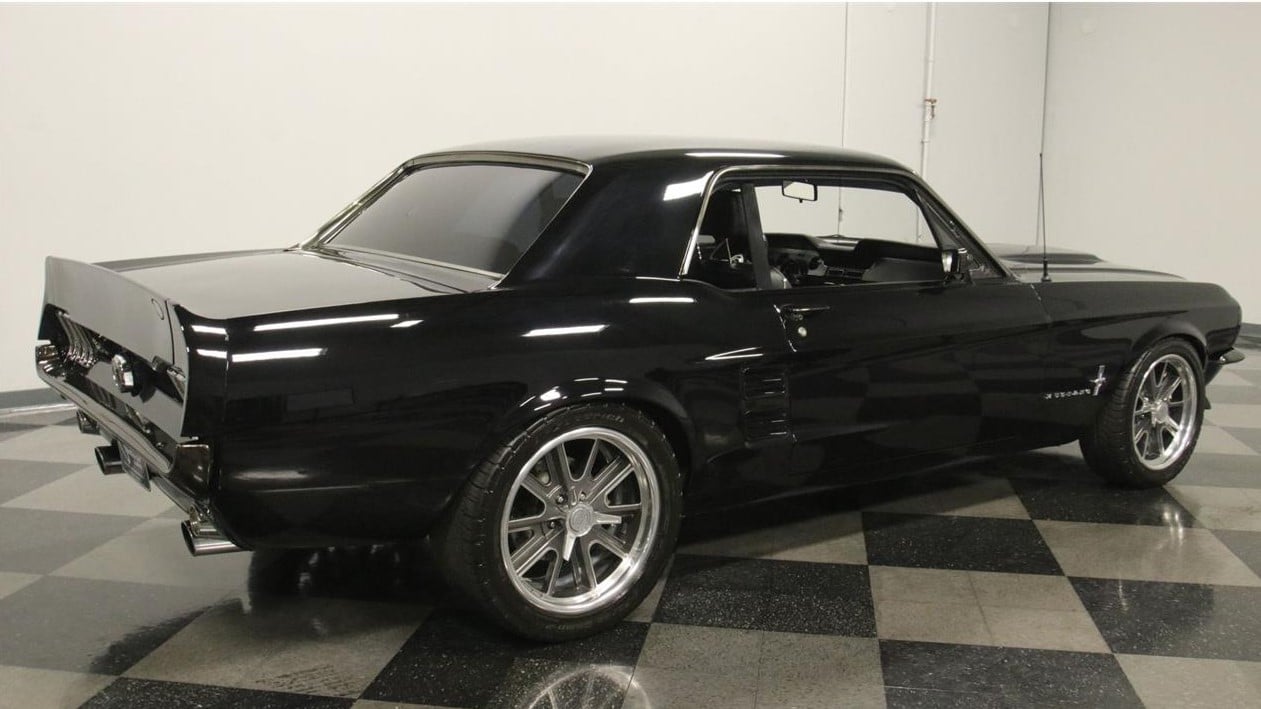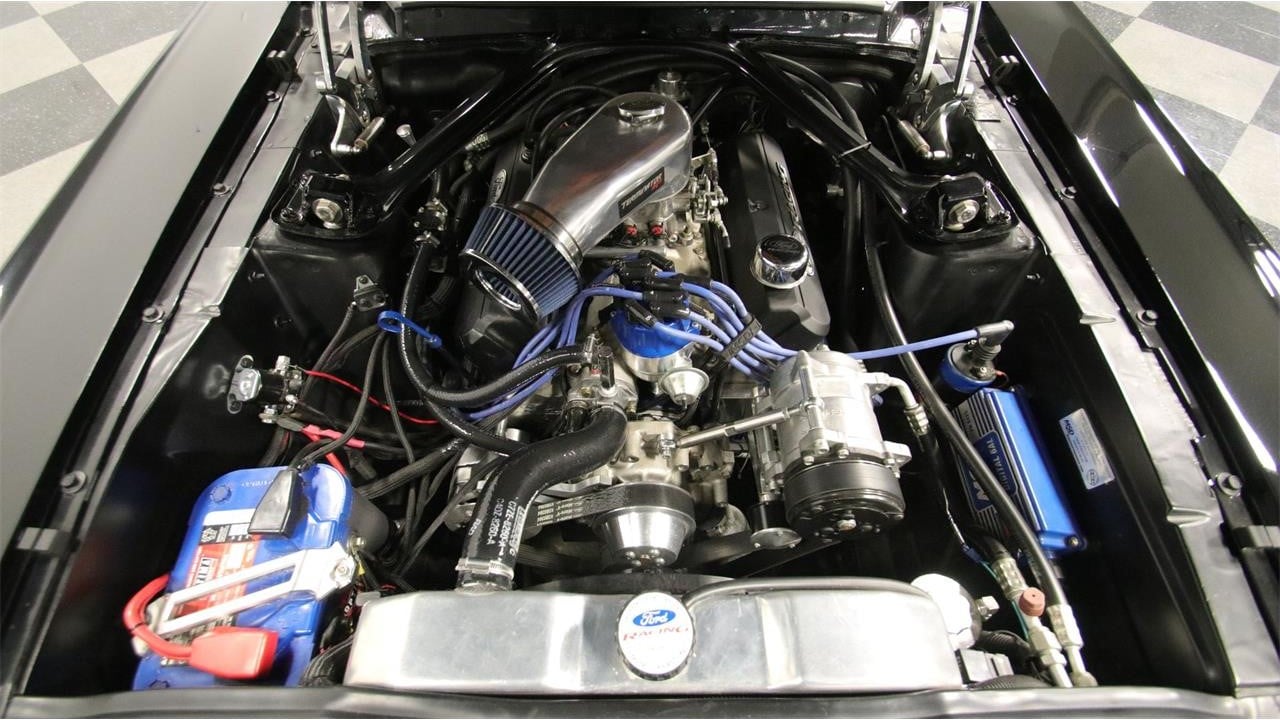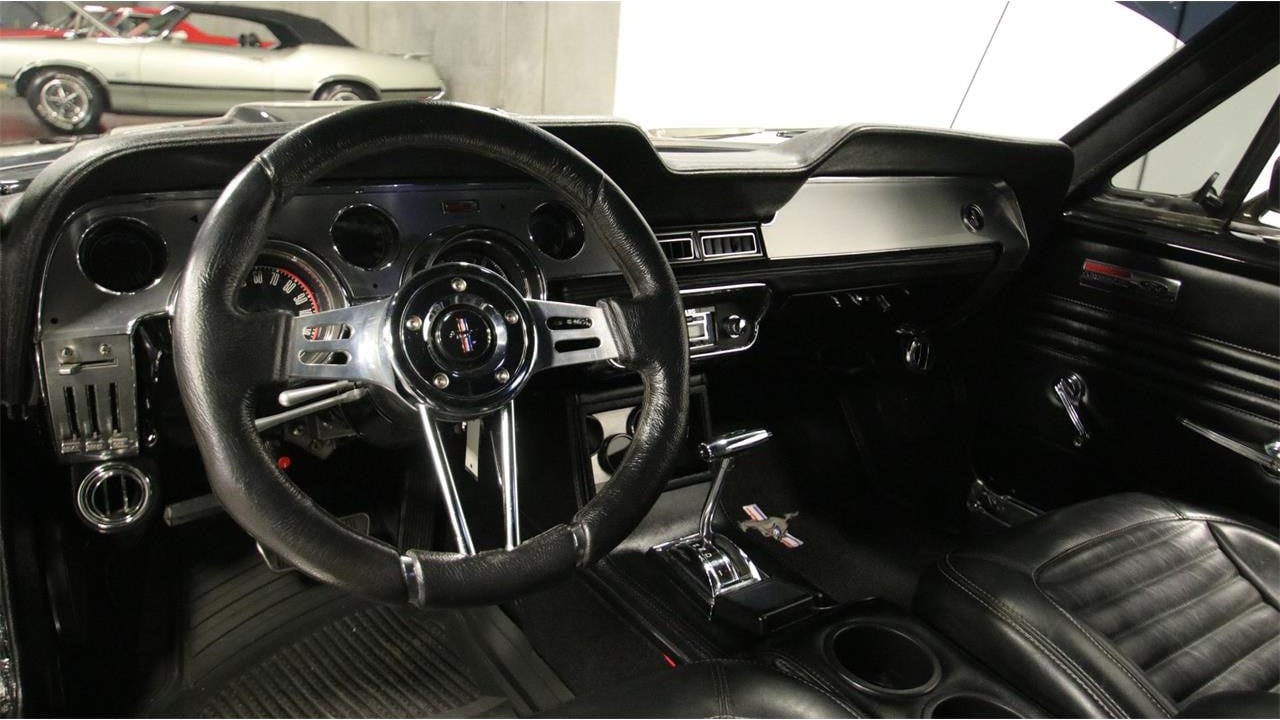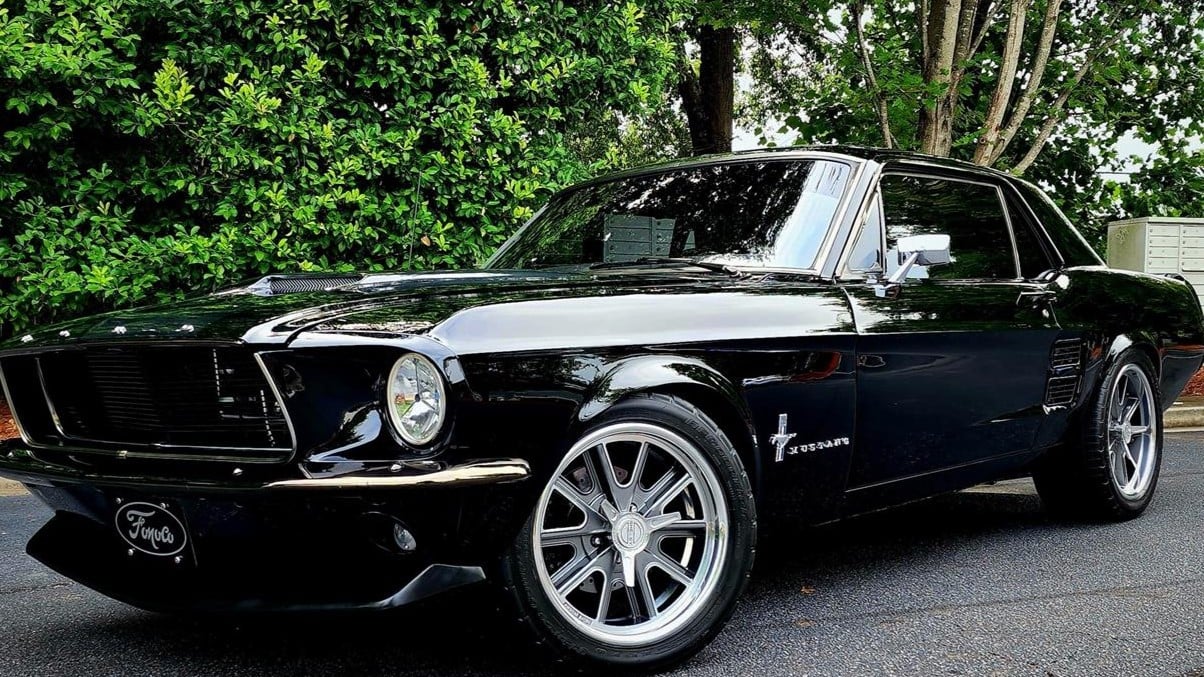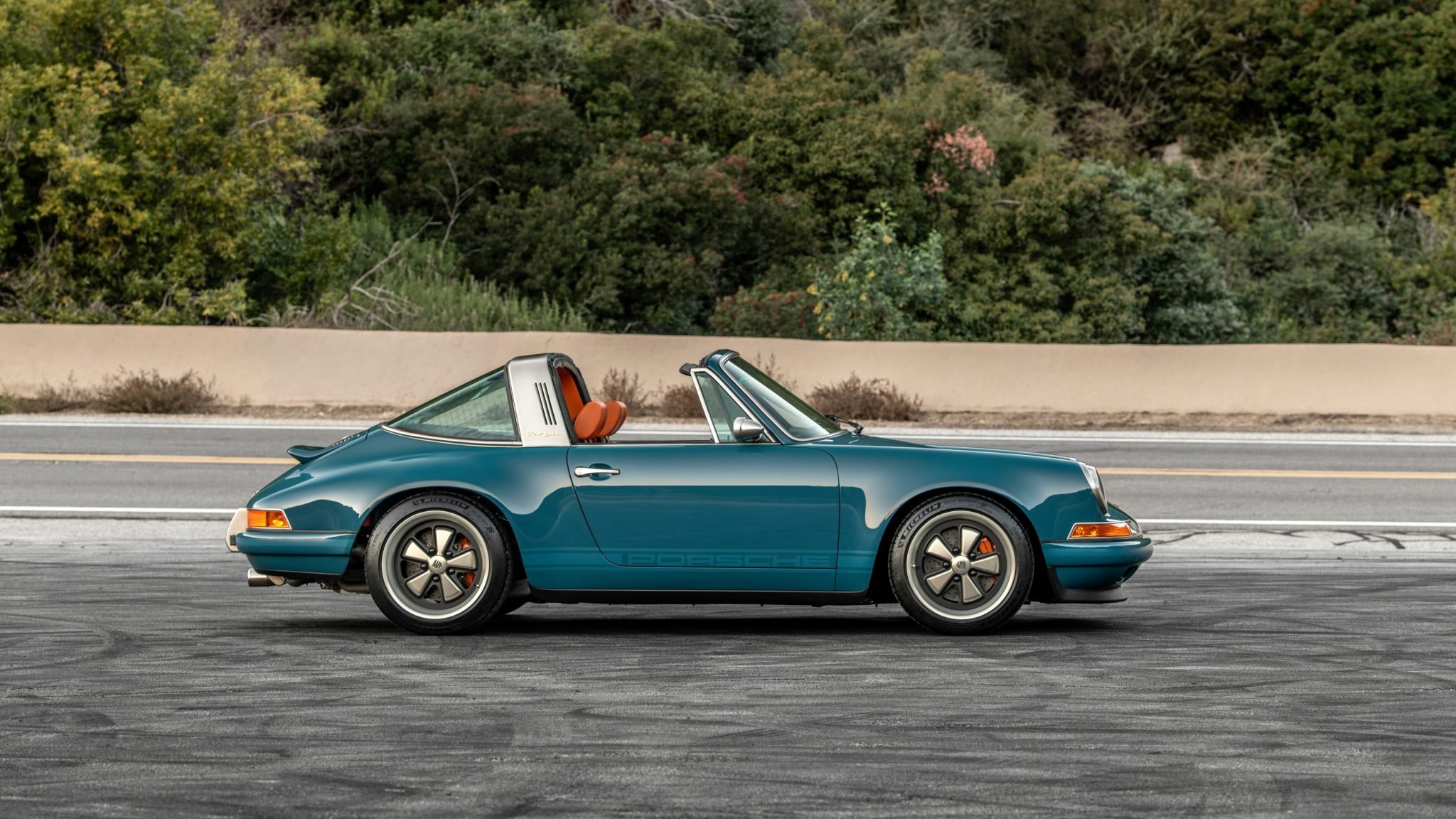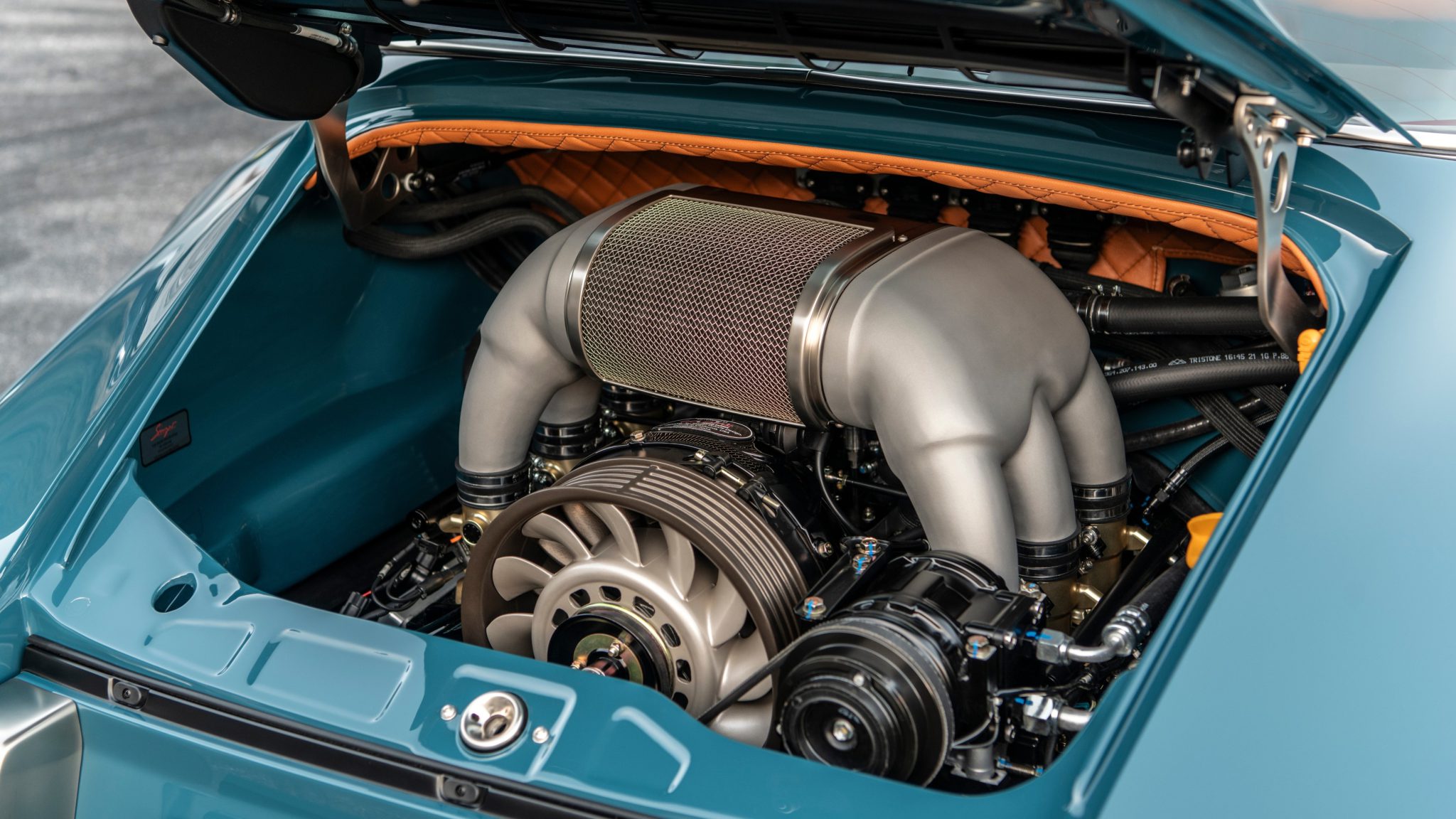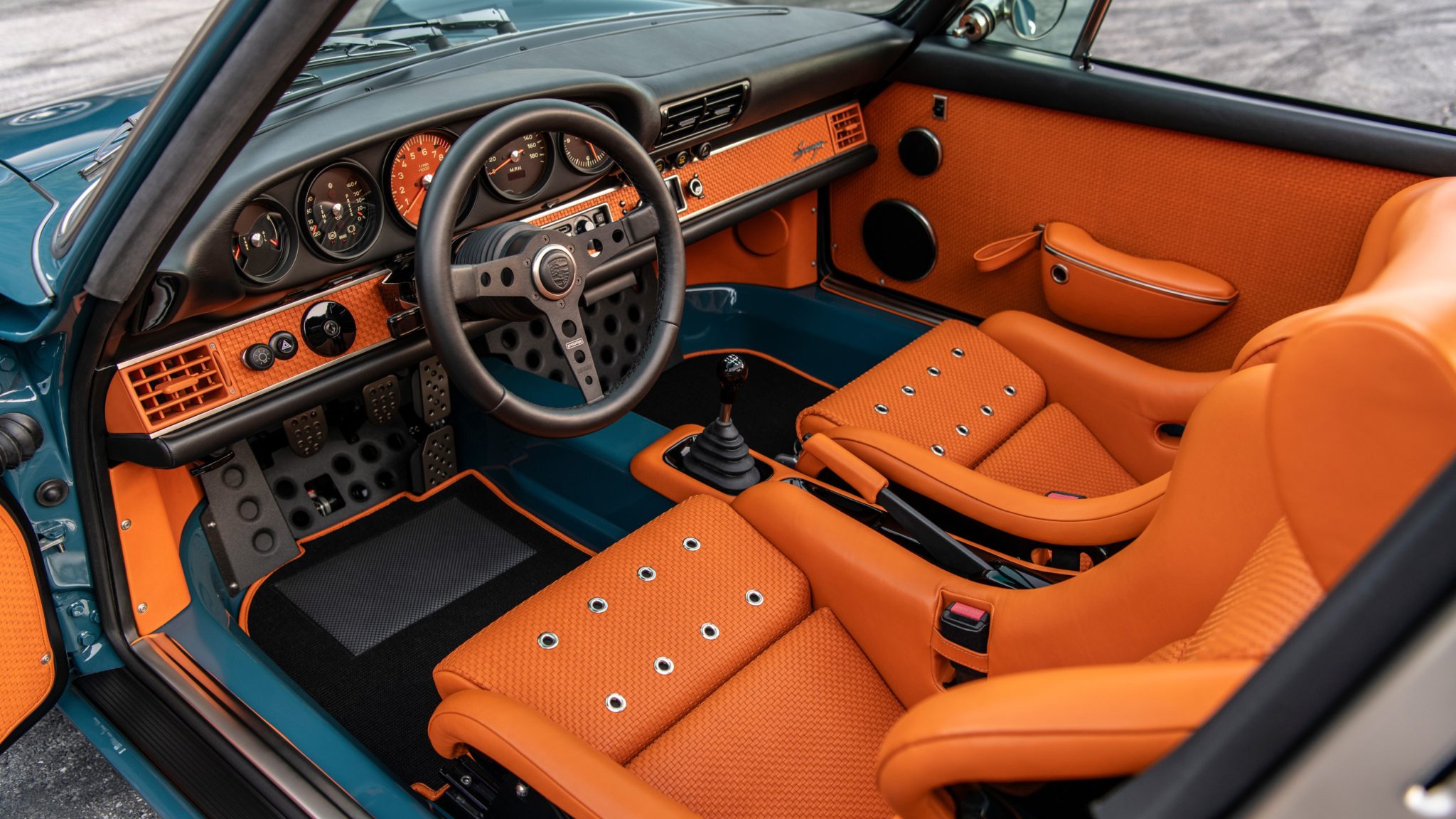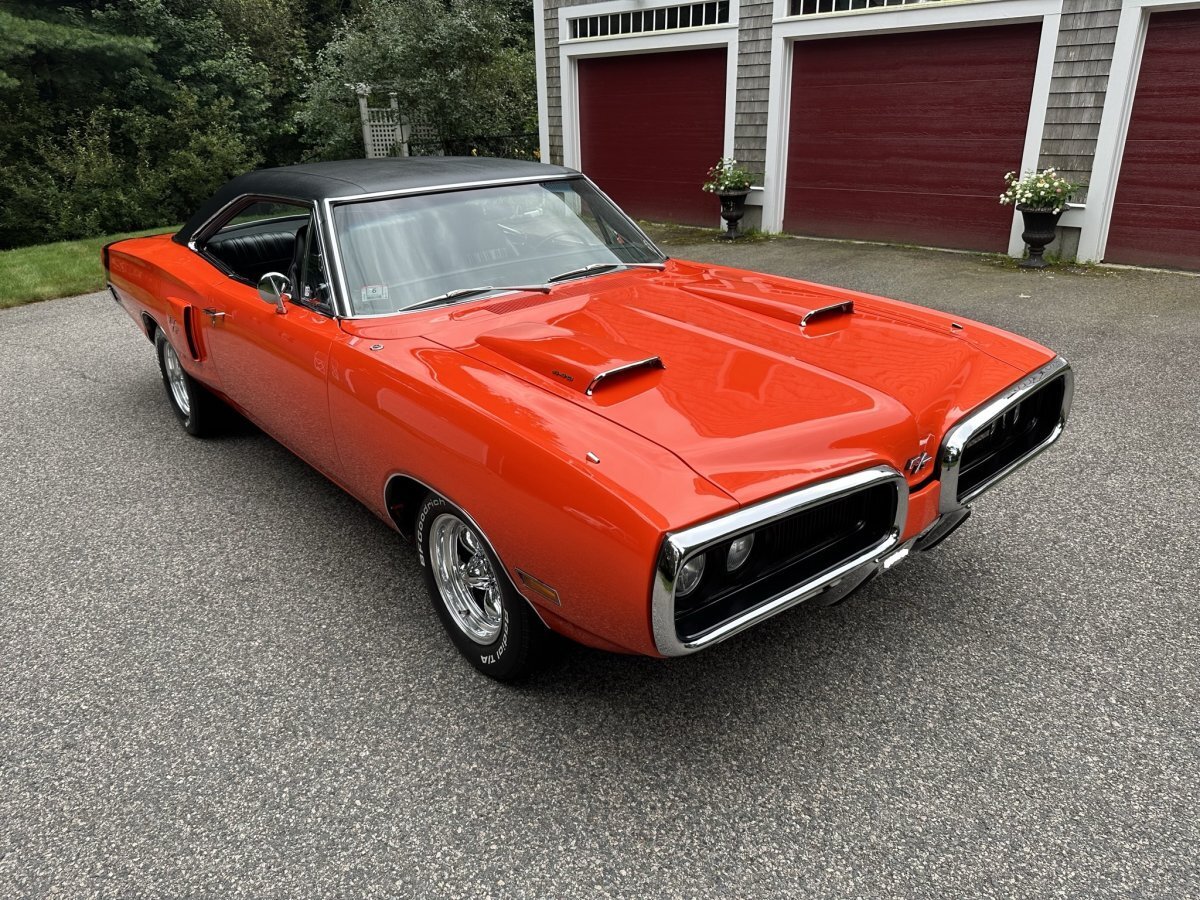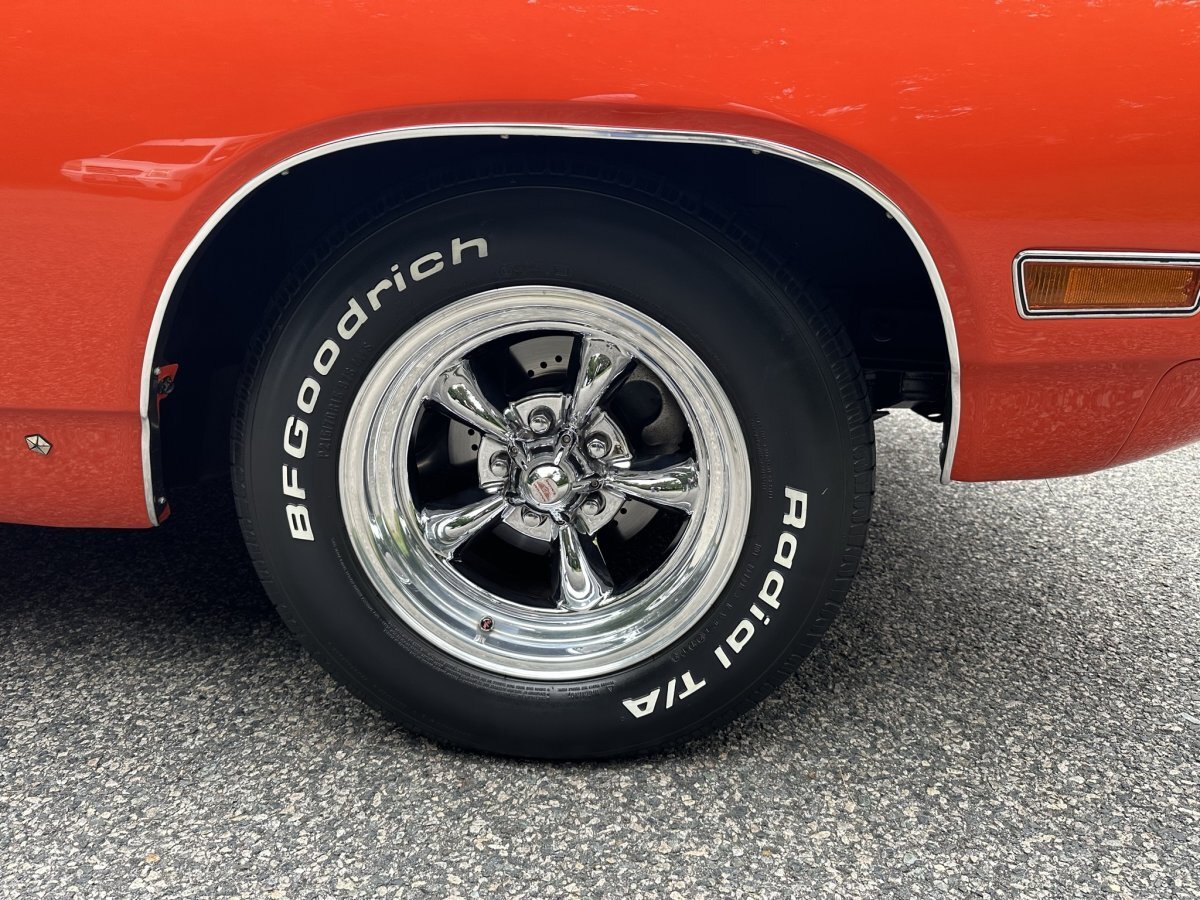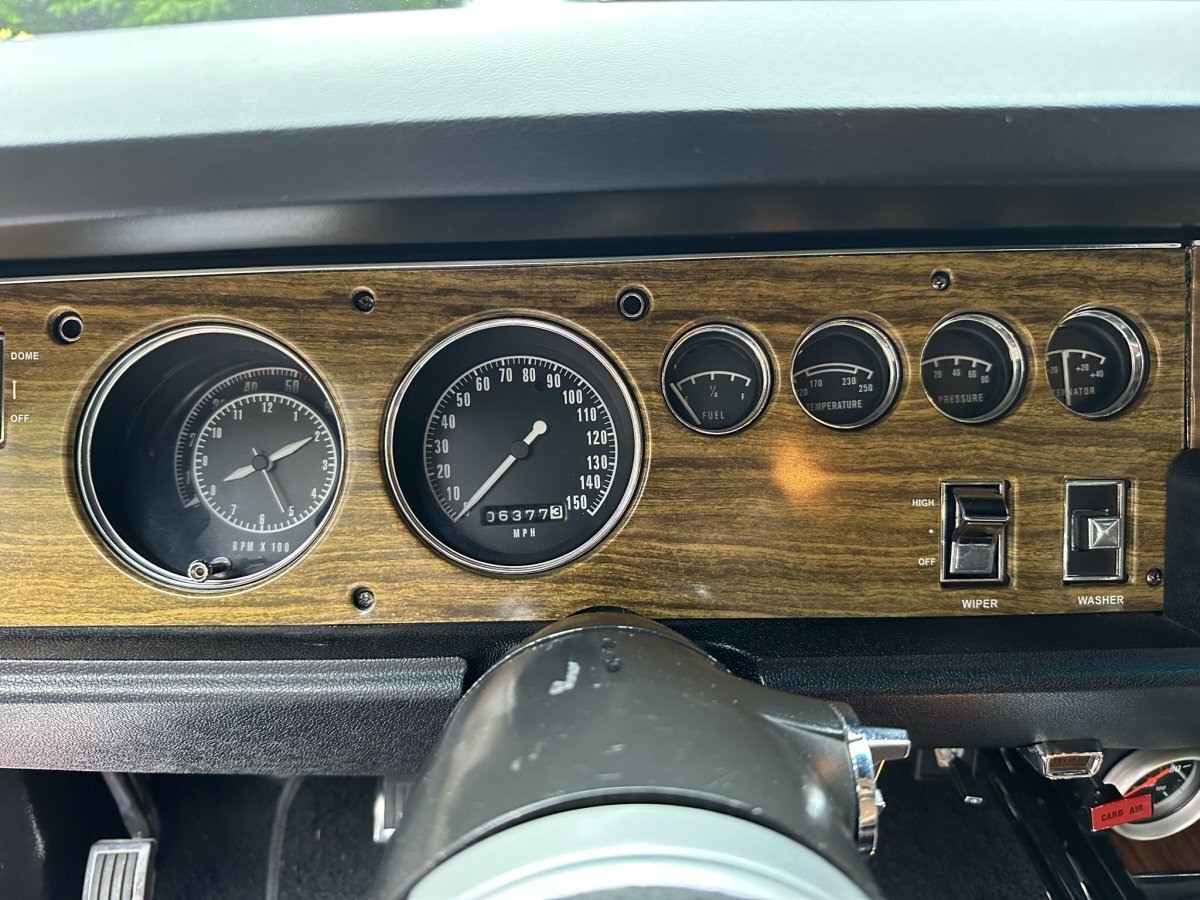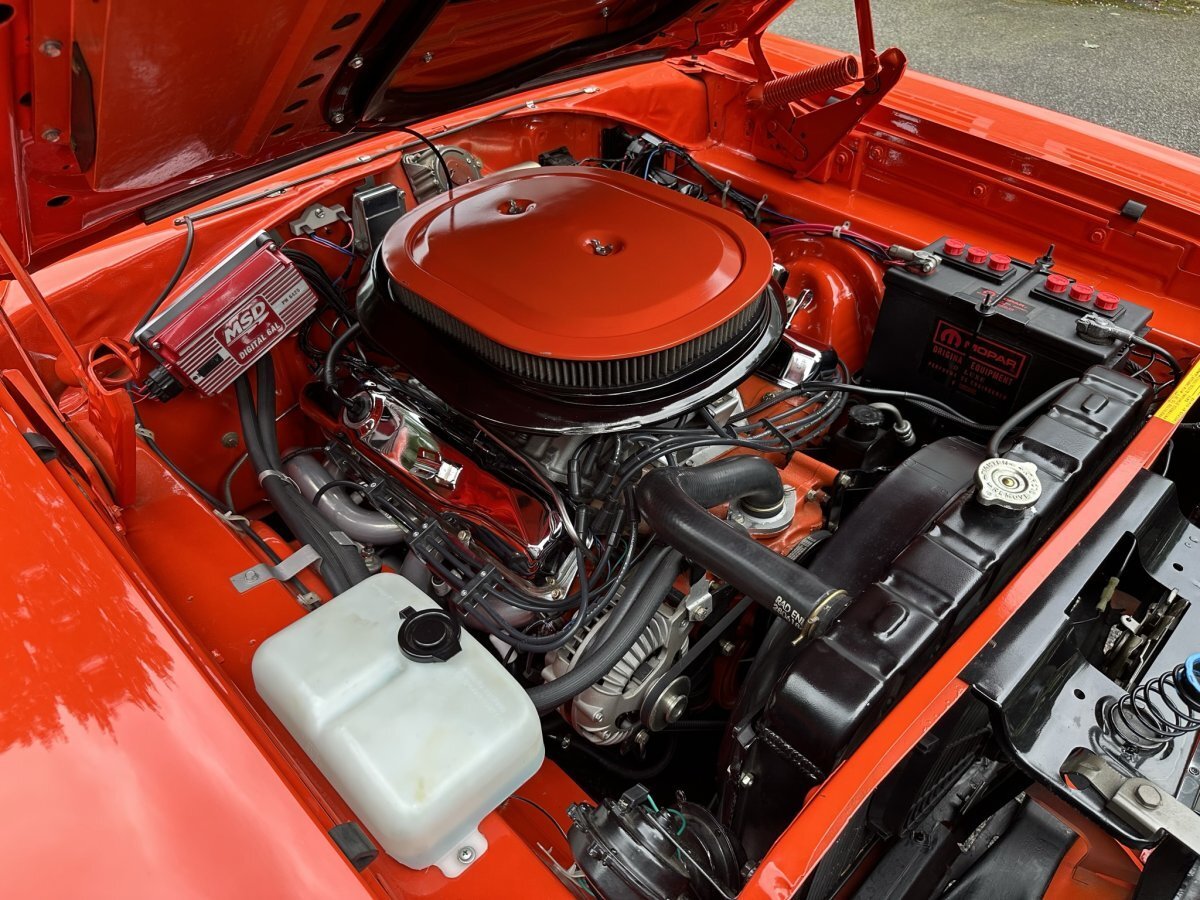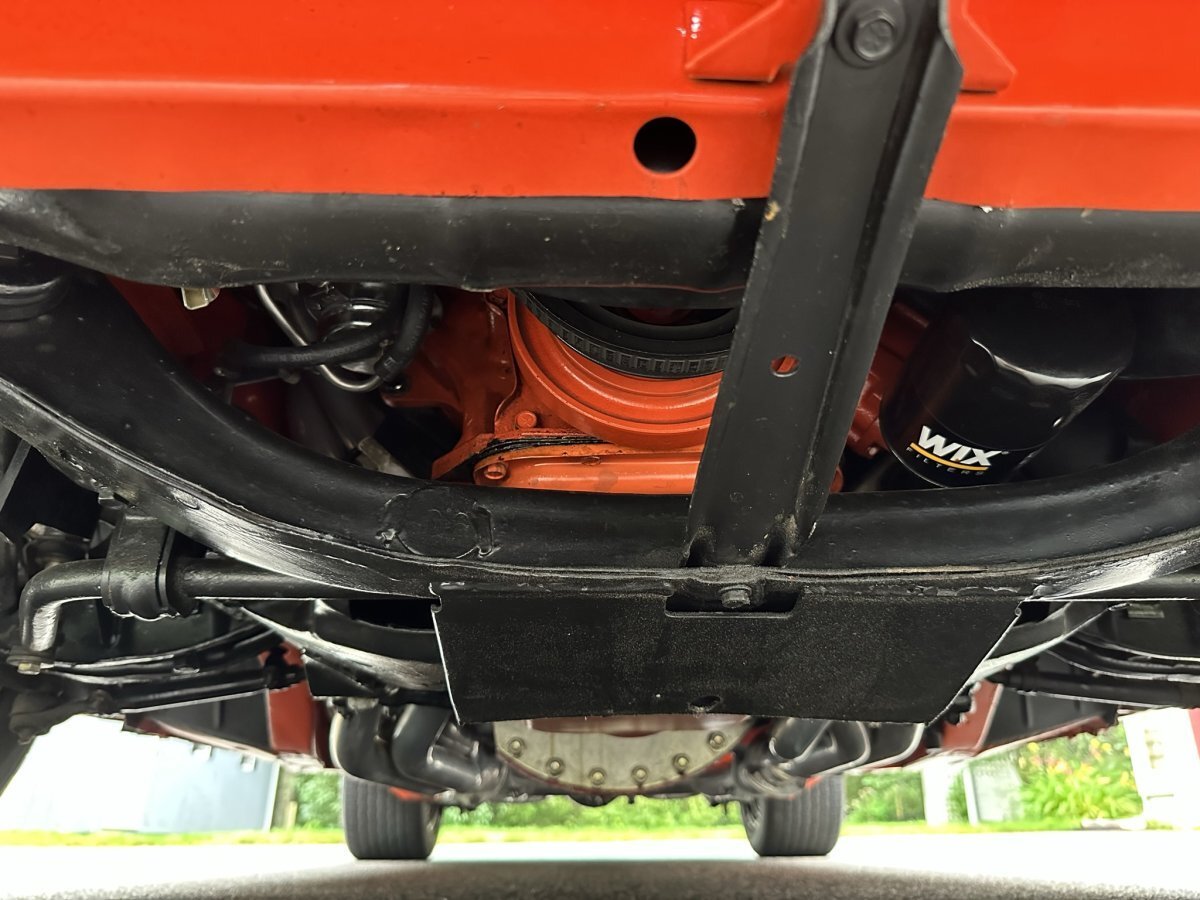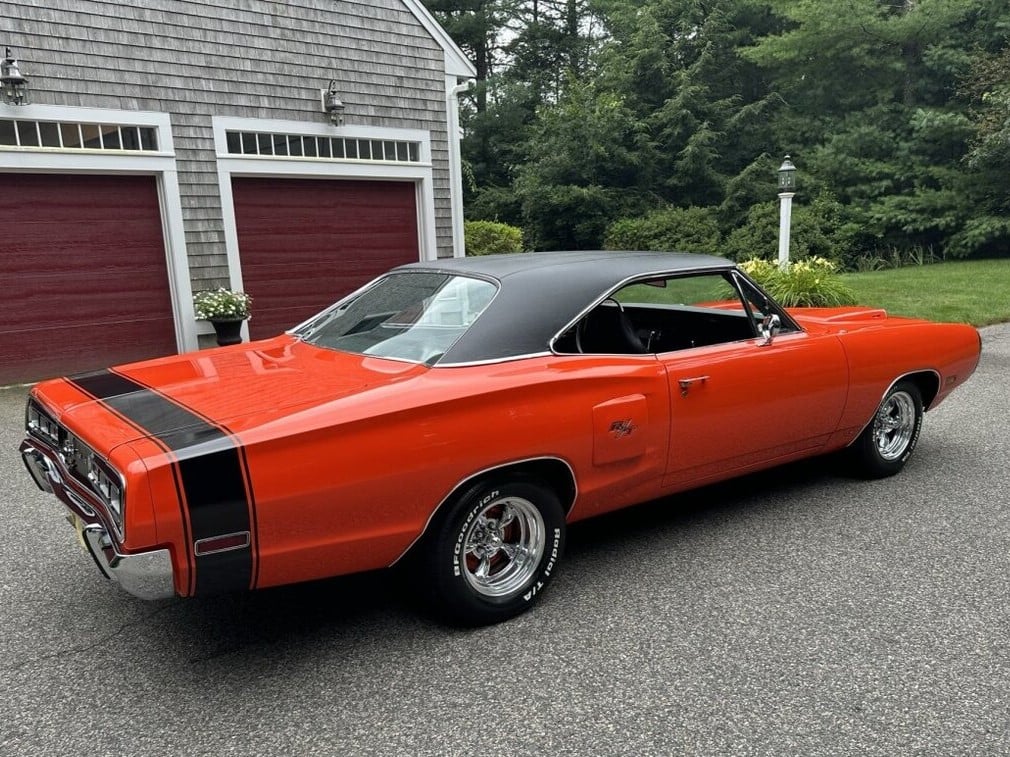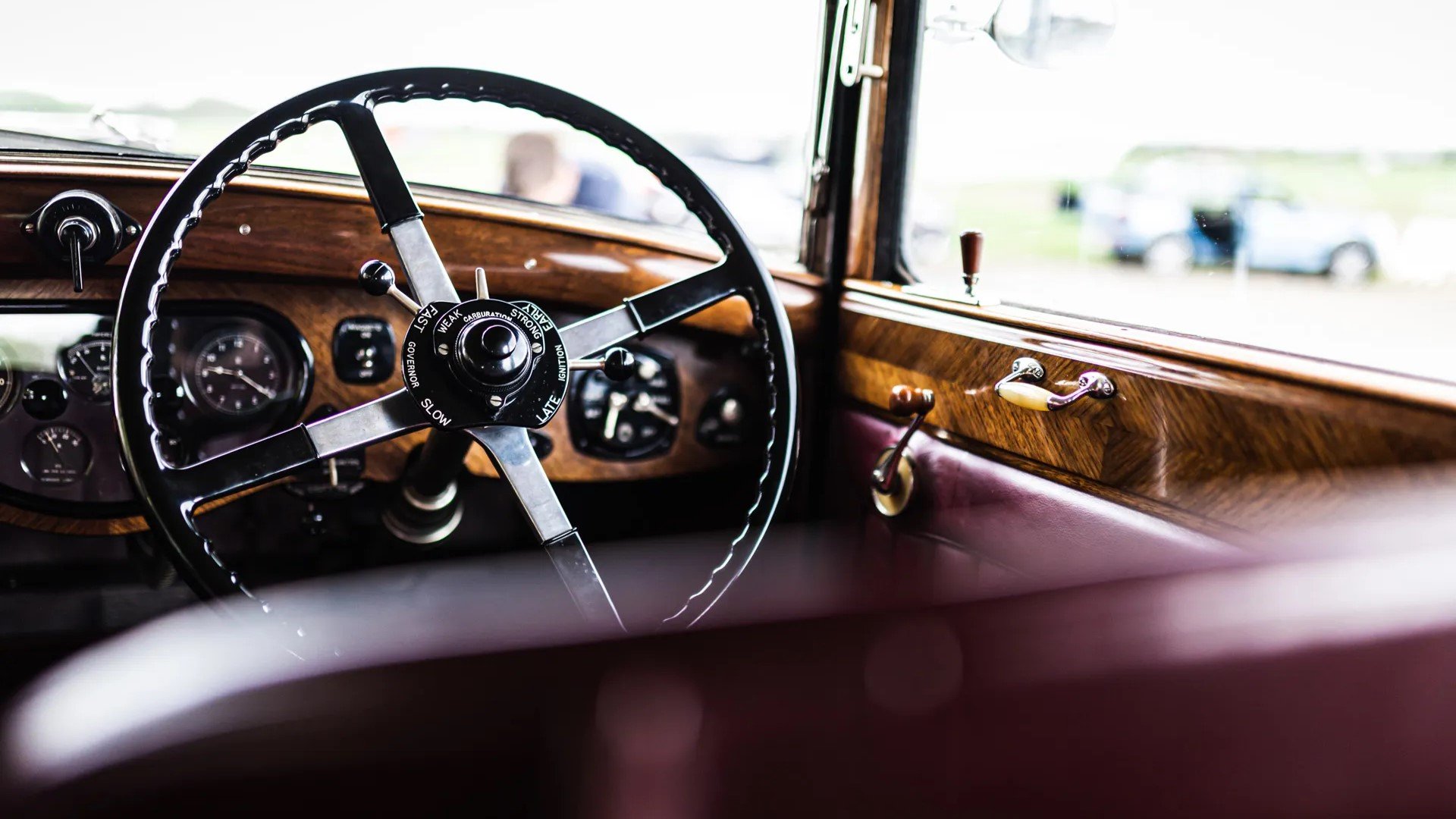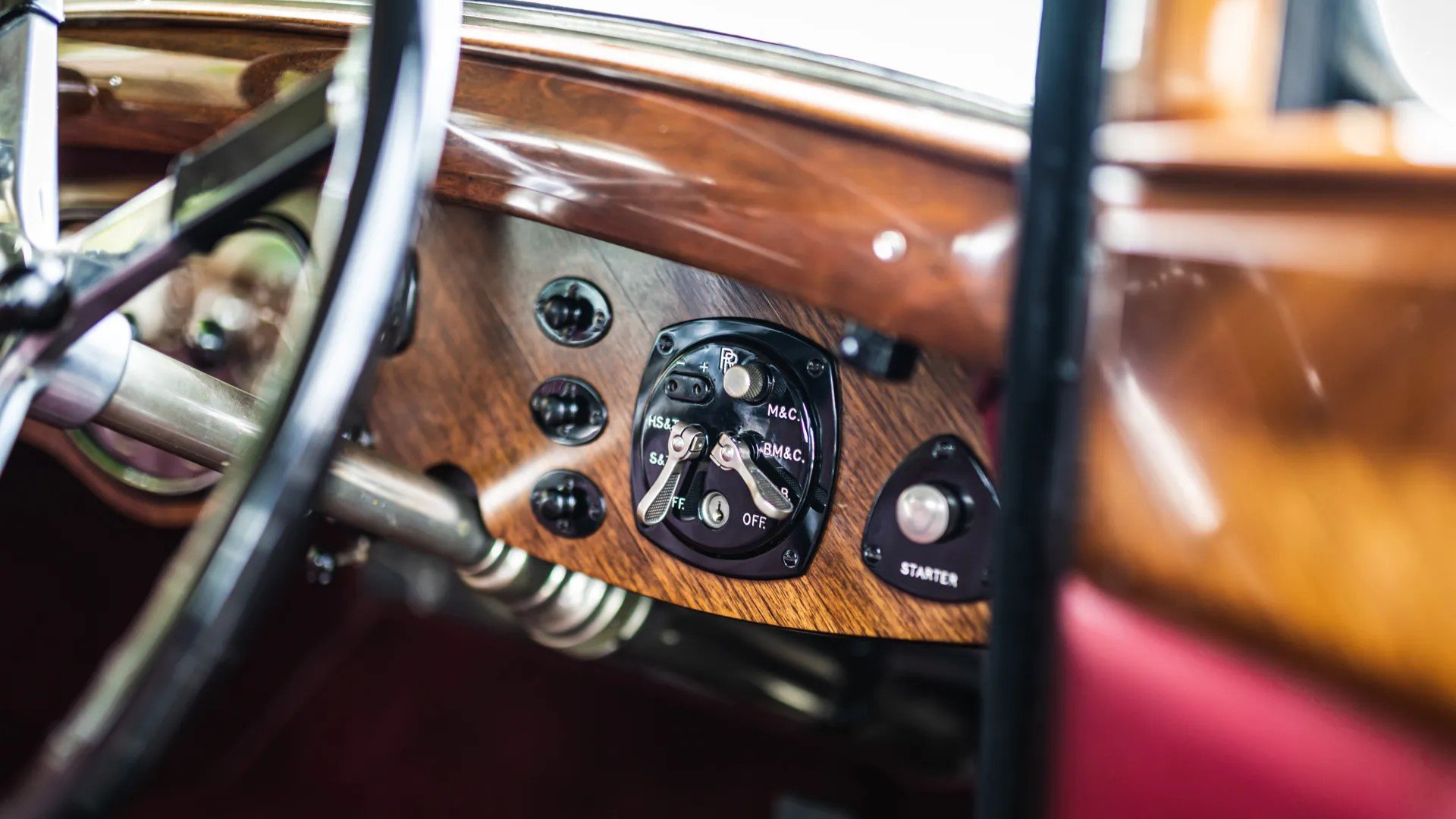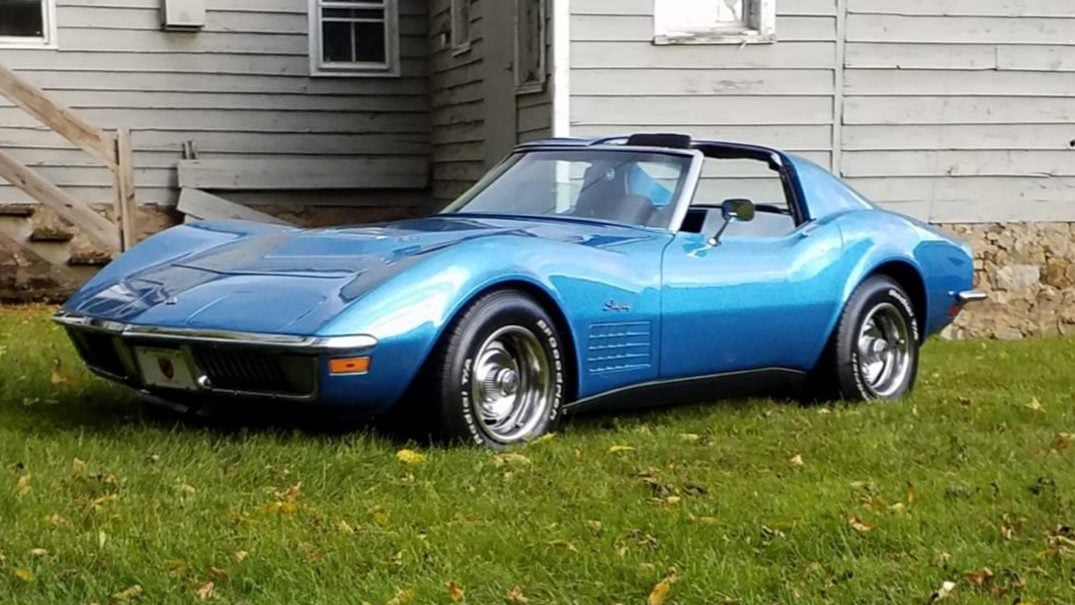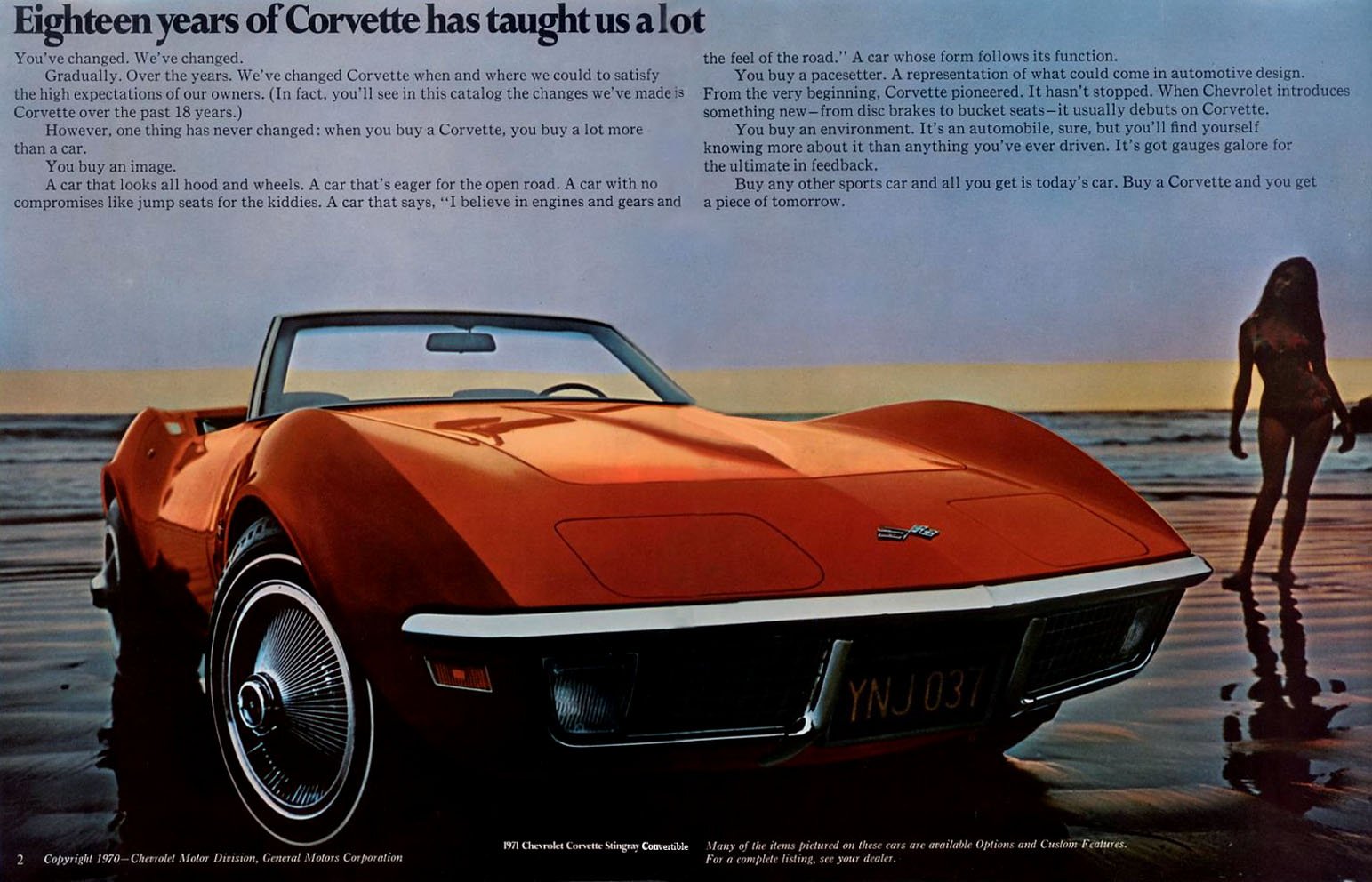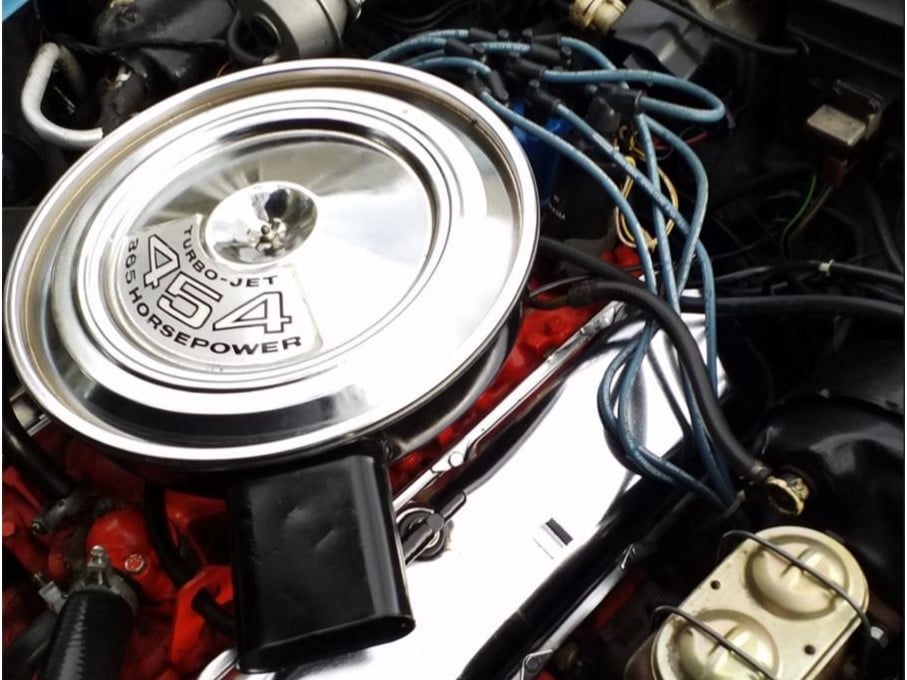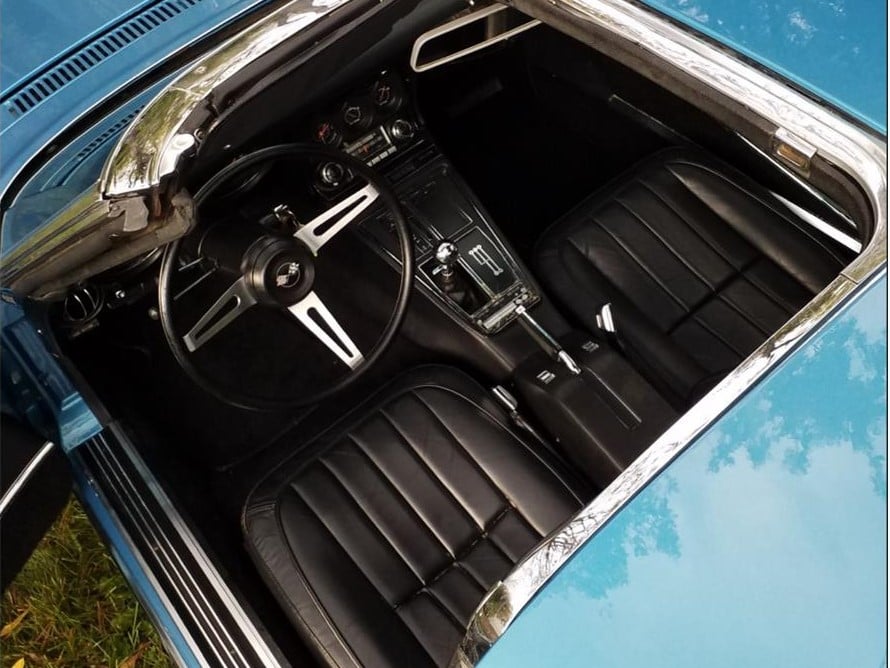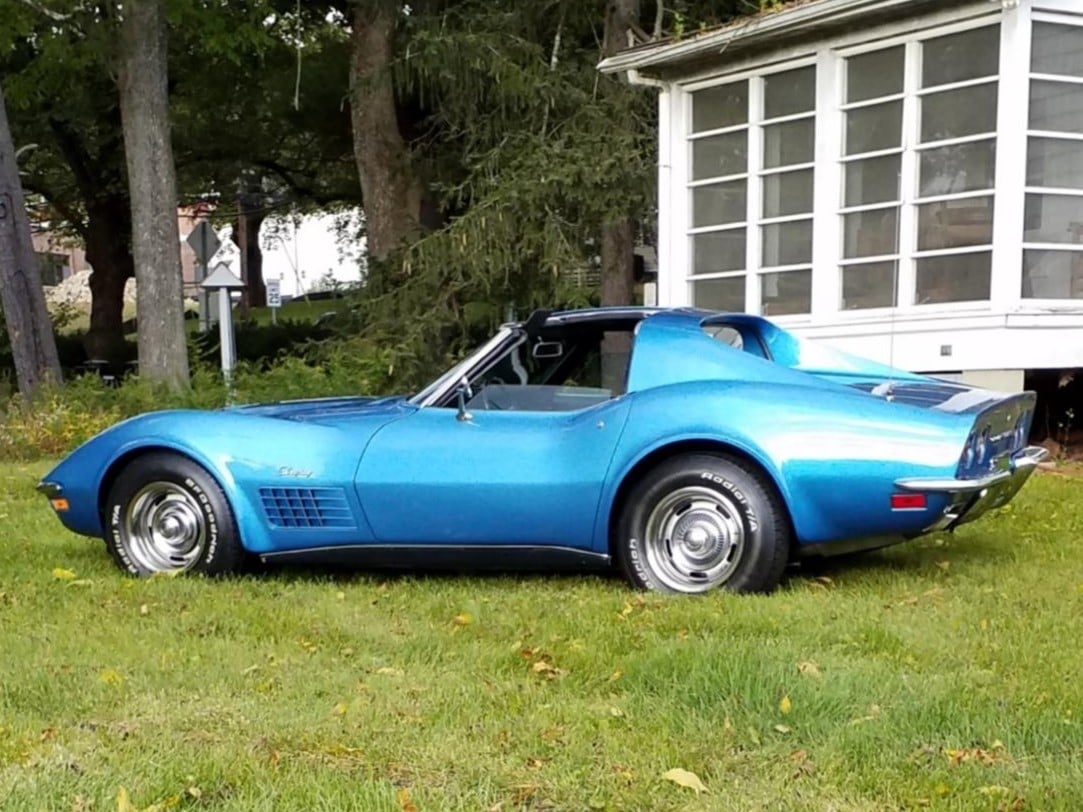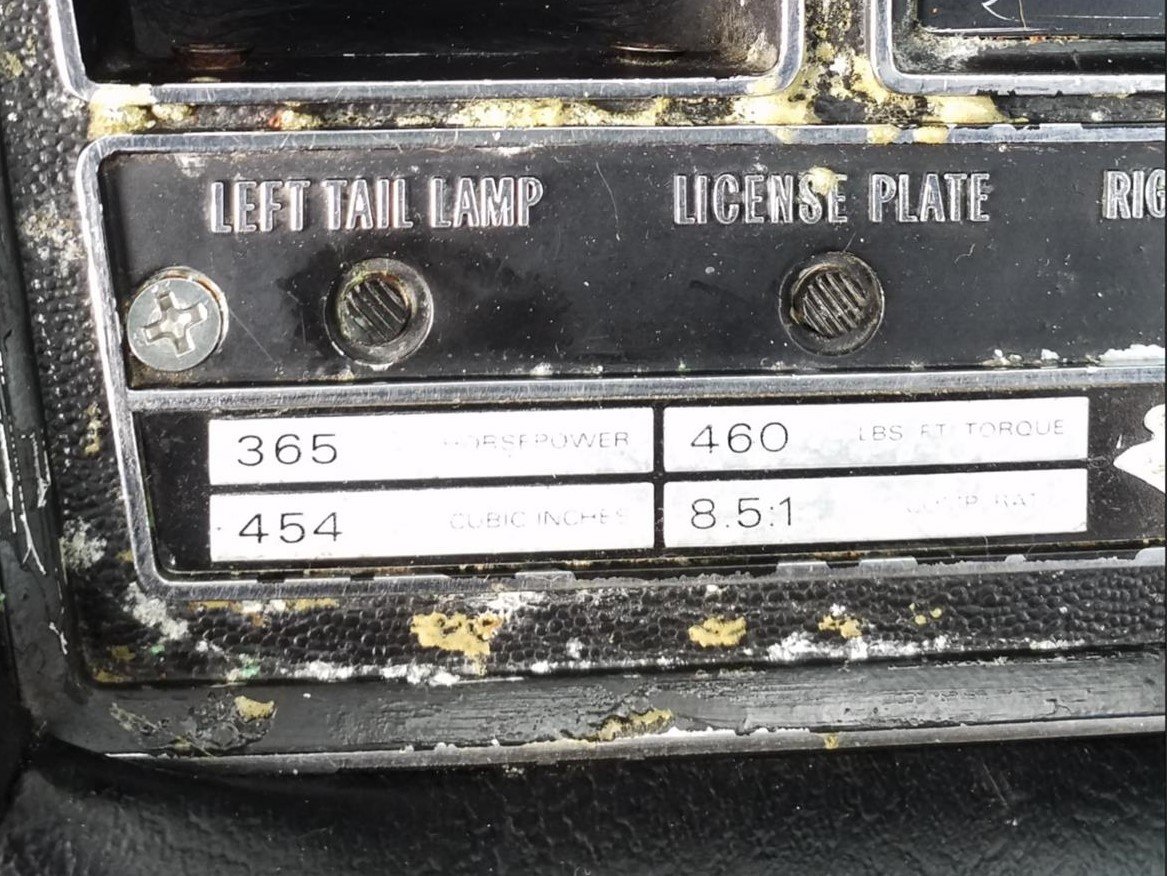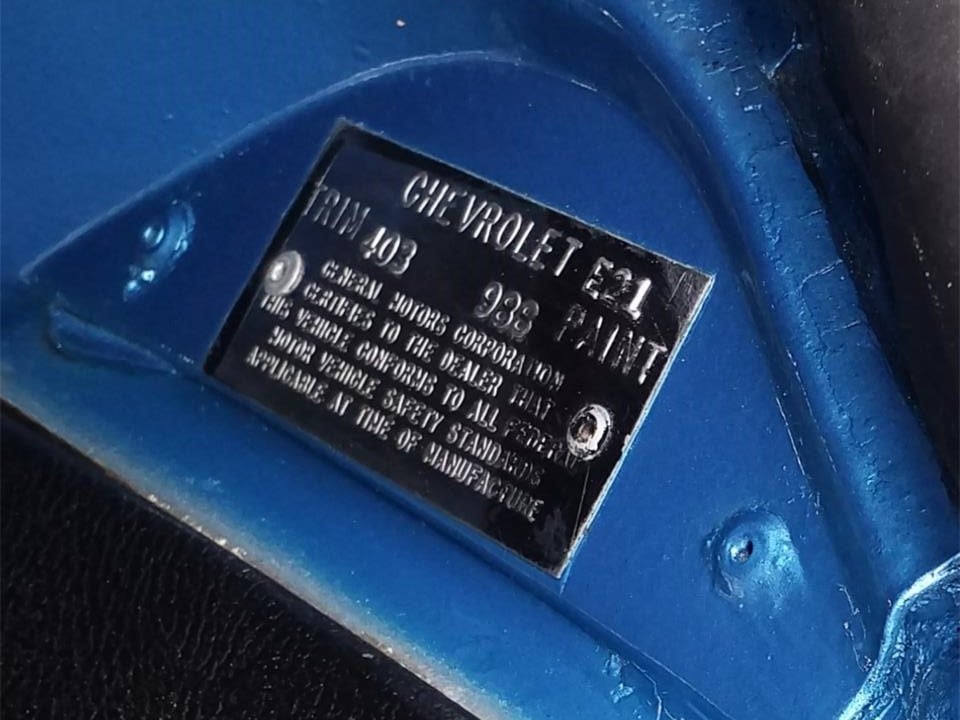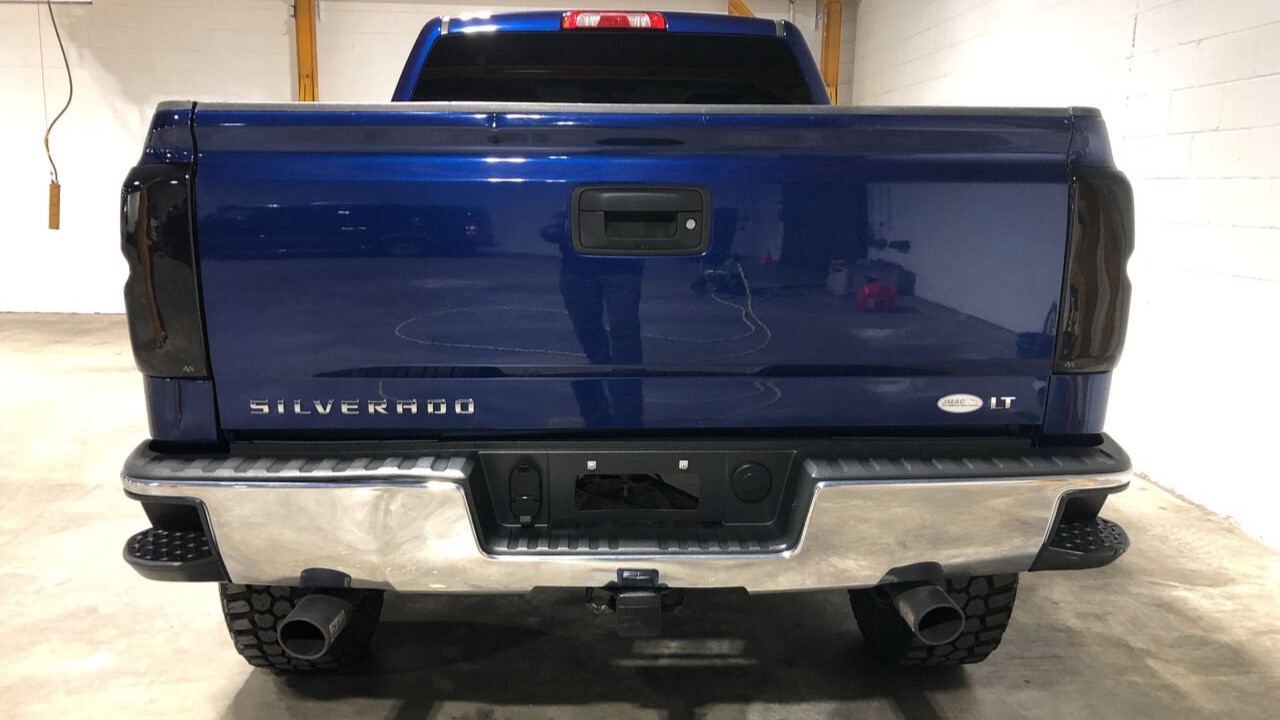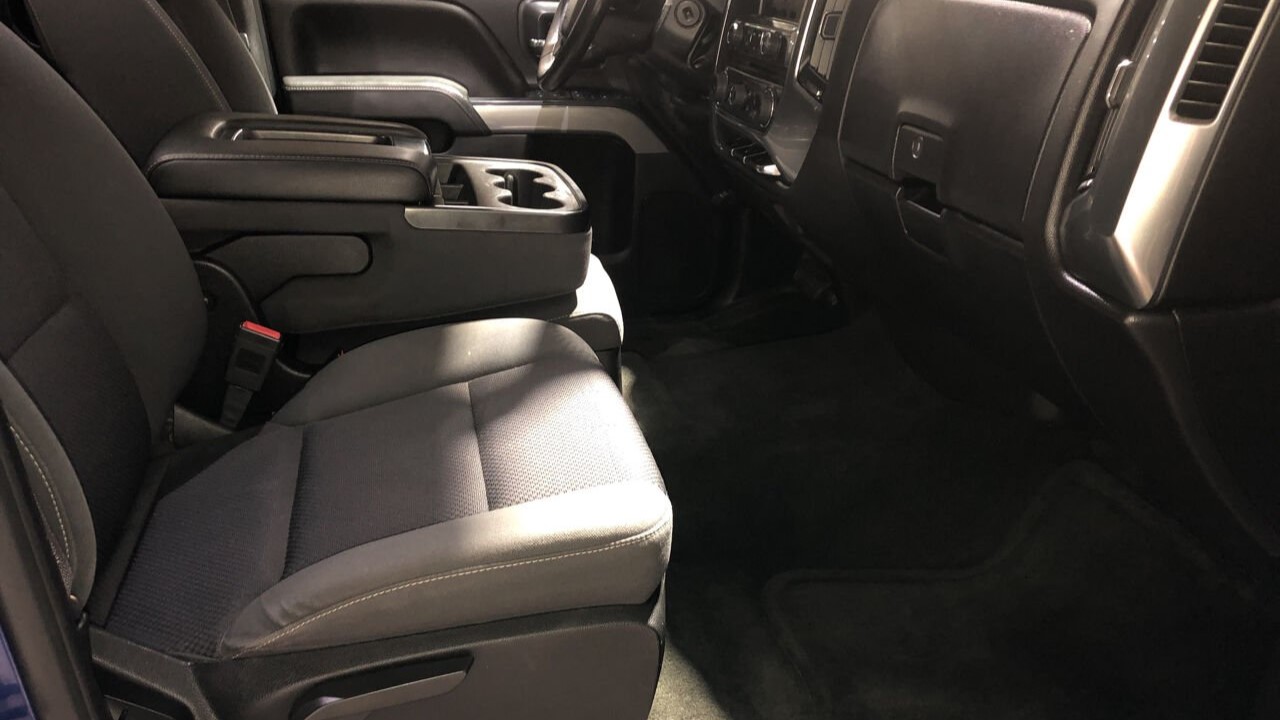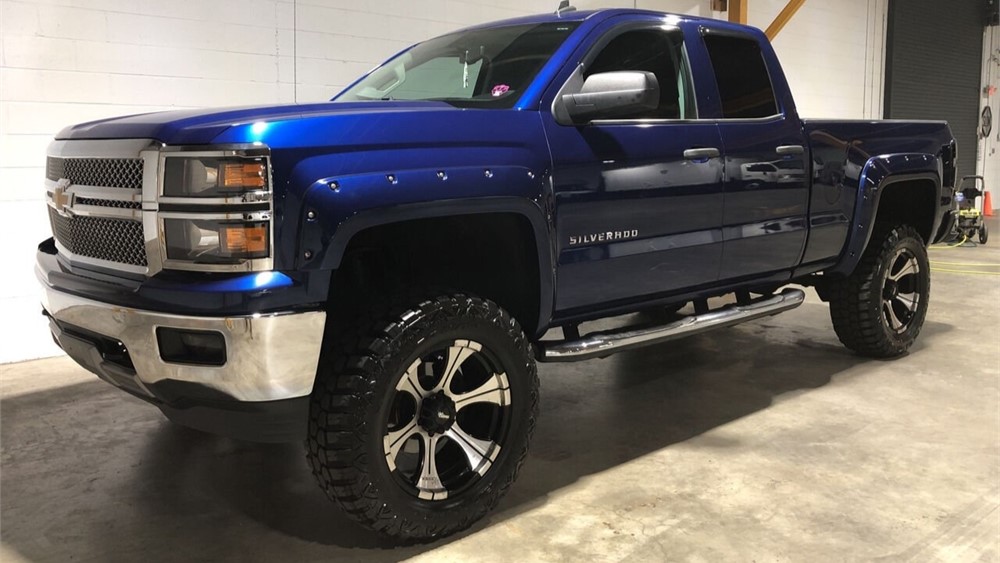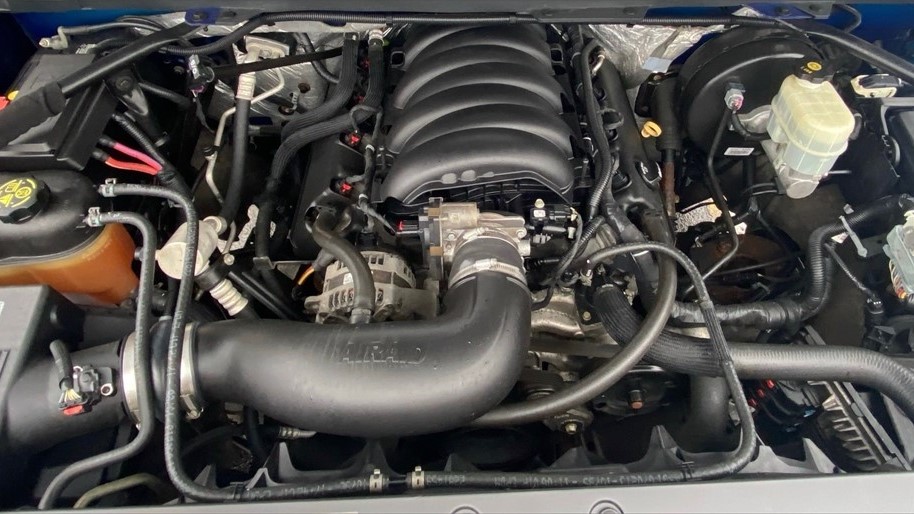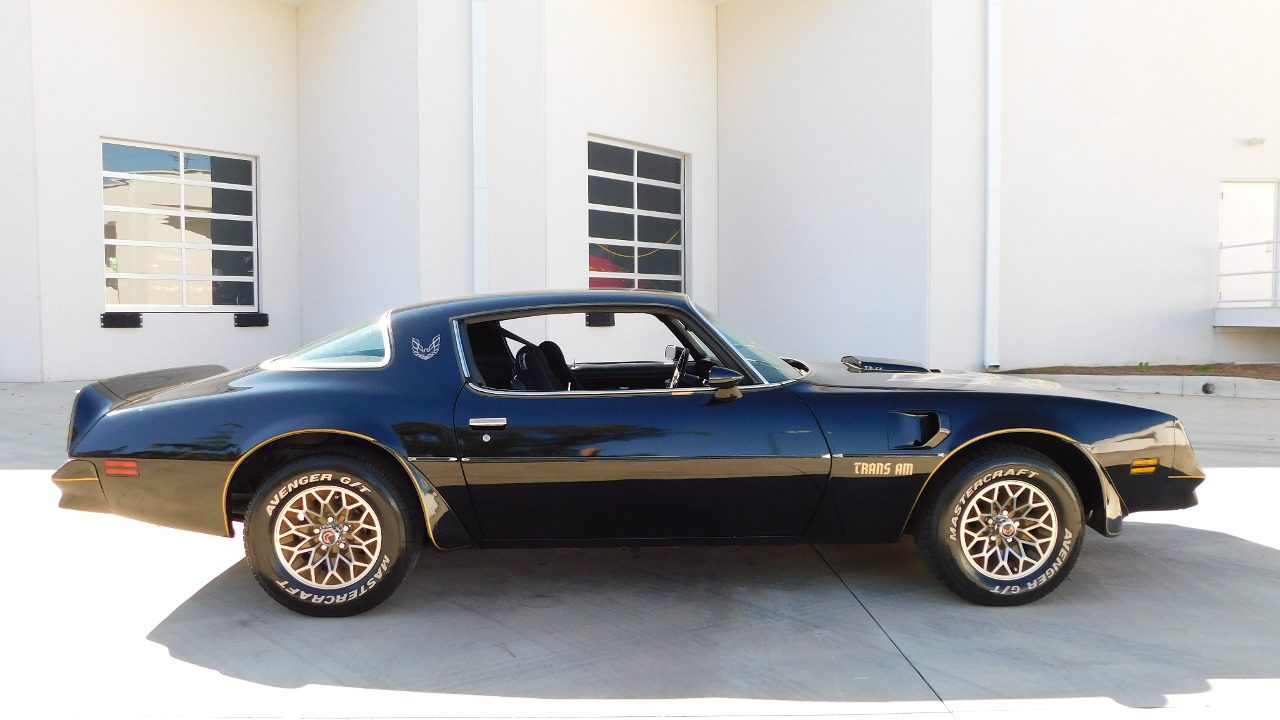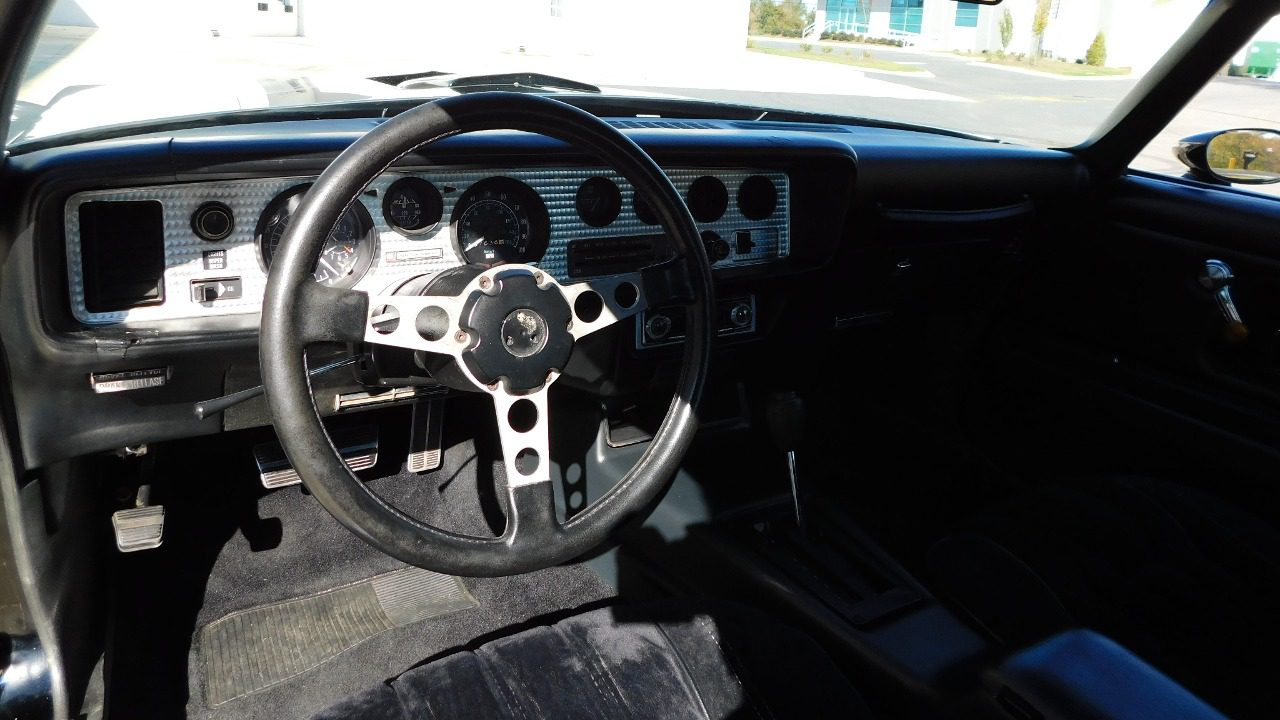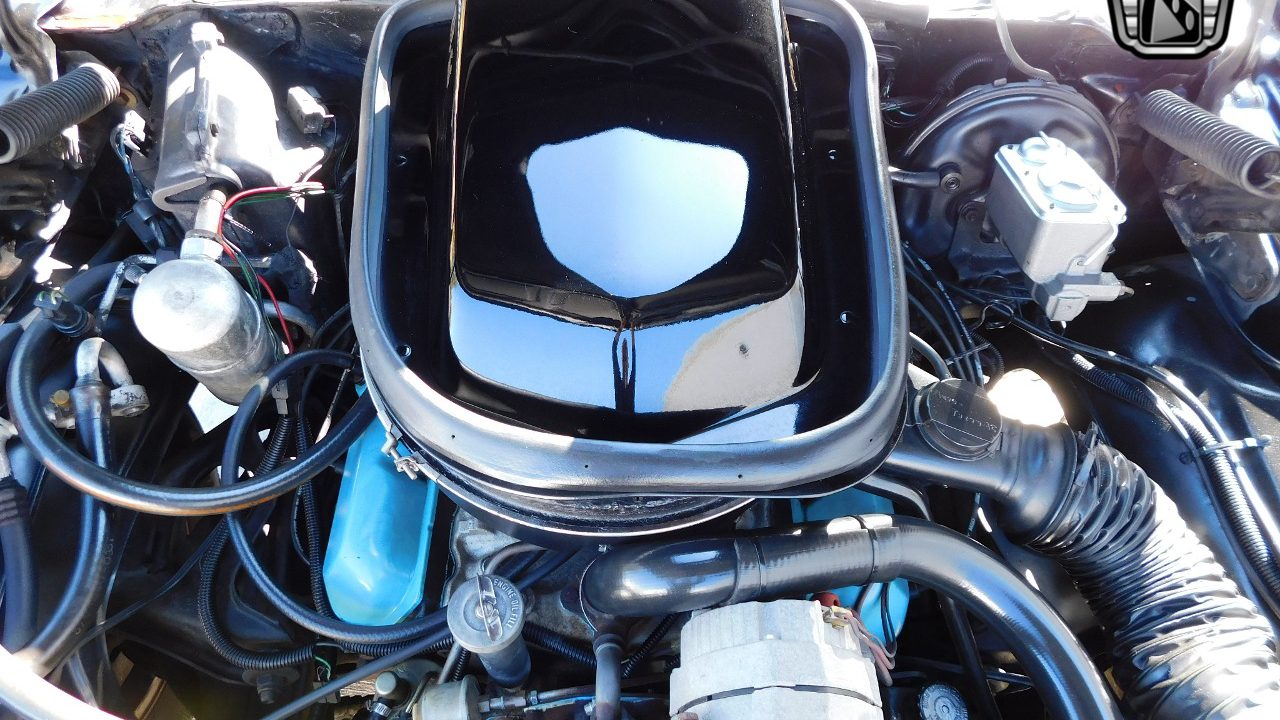This 1949 Mercury Eight coupe was acquired by its current owner in September 2006 and has been modified with shaved door handles and turn signals, rounded door and hood corners, a louvered hood, and a custom flame paint job that extends from the front end to the rear quarter panels. The car is powered by a 350ci V8 paired with a three-speed automatic transmission, and it is also equipped with power steering, front disc brakes, Monroe rear shocks, a dual exhaust system, a Pertronix ignition system, an electronic cooling fan, a two-piece windshield, a frenched antenna, electric door poppers, aftermarket gauges, an 8-ball shift knob, a Fulton traffic light finder, and a Pioneer CD stereo. This lead sled is offered by the seller on behalf of the current owner with fiberglass fender skirts, a vinyl front-end cover, a car cover, and a clean Wisconsin title in the owner’s name.
The car was nosed and decked, the door handles and turn signals were shaved, the door and hood corners were rounded, and the hood was louvered prior to the application of orange and yellow flames by Crash! Customs of Lake Havasu, Arizona. Additional details include a two-piece windshield, a frenched antenna, dual side mirrors, and halogen headlights. The trunk is accessed via a lever hidden behind the fuel door.
The 15″ steel wheels wear polished covers and were mounted with Venezia Classic 787 whitewall tires approximately 2k miles ago. The car is equipped with front disc brakes, power steering, and Monroe rear shocks.
The interior is accessed via magnetically controlled door poppers and features front and rear bench seating upholstered in white leather with black piping as well as a matching headliner and door panels. Appointments include a center console with cupholders, black carpets, an 8-ball shift knob, a Fulton traffic light finder, an analog clock, a Mercury-branded swing-out tissue box holder, and a Pioneer CD stereo.
The two-spoke steering wheel features a chrome horn ring and sits ahead of a Haneline combination gauge with a 140-mph speedometer and readouts for oil pressure, voltage, fuel level, and coolant temperature. A Sun Super Tach II 8k-rpm tachometer is mounted to the steering column. The digital odometer shows 11k miles, all of which were added under current ownership. Total mileage is unknown.
The 350ci V8 was sourced from a 1968 Oldsmobile Cutlass and was installed in 2023 by Zapp’s Rod Shop of Cottage Grove, Wisconsin. The engine features a Pertronix electronic ignition system, Offenhauser finned-aluminum valve covers, an electronic cooling fan, a dual exhaust system, and a custom-painted air cleaner lid with flames that match the exterior of the car.
A George Barris signature adorns the firewall.
Power is delivered to the rear wheels via a replacement Turbo 350 three-speed automatic transmission. A transmission fluid leak is noted.
Also included in the sale are a set of black-painted fiberglass fender skirts, a car cover, a vinyl front-end cover, and parts brochures.
The car is titled using the VIN 9CM136524 shown above. An additional underhood data plate shown in the gallery has the number 9CM218220.
The Wisconsin title lists “Street Modified” under the Additional Vehicle Details section, and a redacted image of the title is provided in the gallery.

